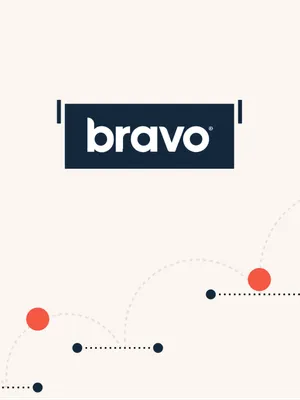Bob, are you tired of your brand’s emails?

Elyse Kamibayashi, Former Senior Brand Strategist
Article Categories:
Posted on
How to write branded emails without making everyone unsubscribe.
If the title of this article made you cringe, you’re in the right place. Or you’re in the wrong place, because that means you’d never write an email like that to begin with. Either way, welcome (and a special shoutout to everyone whose name is actually Bob).
According to a recent Hubspot article (citing Constant Contact), the average ROI for email marketing is $42 for every $1 spent — a fact I will strenuously deny while browsing Anthropologie’s pre-pre-summer 30% off sale.
Like it or not, email is one of the most effective tools in a brand’s marketing kit. Brands are investing a great deal in email marketing — which means that checking our inboxes now feels like a forced march through Times Square, where every billboard knows your name, and is yelling it at you.
Point is: the inbox is full of opportunities for brands, but it’s also full of other brands — which isn’t great for any of them, and definitely isn’t great for the owner of the inbox, who doesn't remember subscribing to any of it.
The challenge when we were creating an email campaign for Bravo Wellness was: can we create emails that are good for Bravo AND good for their audience's inbox?
Our digital campaign strategy positioned Bravo as the employee wellness program that worked harder for the people who worked the hardest.
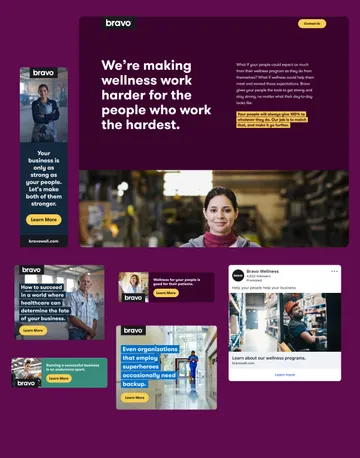
We had a solid strategy, which is the first step towards creating emails that don’t make people want to duck and run. The challenge is that we tend to think of a strategy as something that determines what you say to your audience. And when it comes to email, it’s more helpful to think of the strategy as something that determines what you give your audience. And brands can't only give their audience discounts. Discounts can be great at driving engagement and sales, but they’re not as good at building brand loyalty (unless you’re Bed Bath and Beyond).
So what did Bravo have to give?
We had positioned Bravo as a hard-working wellness program. We realized quickly that the emails we wrote had to be the hardest-working emails in someone's inbox. We decided that every email we sent would be a demonstration of what Bravo would do for our target audience of HR professionals in healthcare and blue collar industries.
We created two batches of emails for Bravo to test with their audience: one was targeted towards audience members who were familiar with Bravo and who might have encountered our digital campaign. The other batch was for a smaller subset of their audience: these were people who were not familiar with Bravo, but who were high-potential leads worth pursuing.
The emails for “warm leads” — the people who were familiar with Bravo — were consistent with the tone and visual style of the campaign. And each offered to do something to make the reader’s work a little easier. If someone was interested in speaking to Bravo about their wellness program, we gave them a way to "design their conversation," so they wouldn't have to waste time sitting through a standard sales pitch, or listening to things that weren't relevant to them.
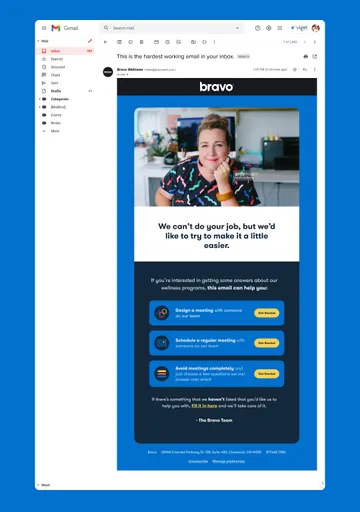
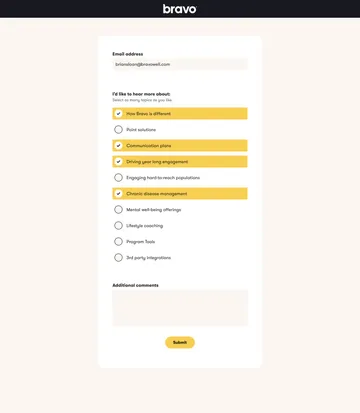
The cold emails were a little different. We stripped away the branding and made them as straight-forward, practical, and short as possible. The subject line told the reader exactly what the email could do for them, and then did it as efficiently as possible. In one email, we gave the reader a brief list of things they could do to get more work from their current wellness provider. In another, we gave them the (potentially risky) option of unsubscribing from all emails from Bravo if the one they were reading didn’t help them.
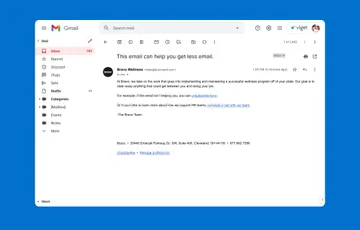
Another was only one sentence long.
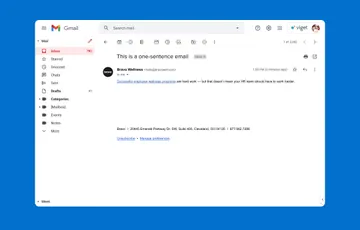
The goal was to set ourselves apart from the slew of emails in the person's inbox — all of which were promising them everything but the thing that they really needed: which was less email and more help.
In conclusion
Email marketing can and should do more for people than offer to take less of their money. The types of promotional emails that glut our inboxes every day may not always be ineffective, but if we want to do more than drive clicks, we’re going to have to offer something better.
